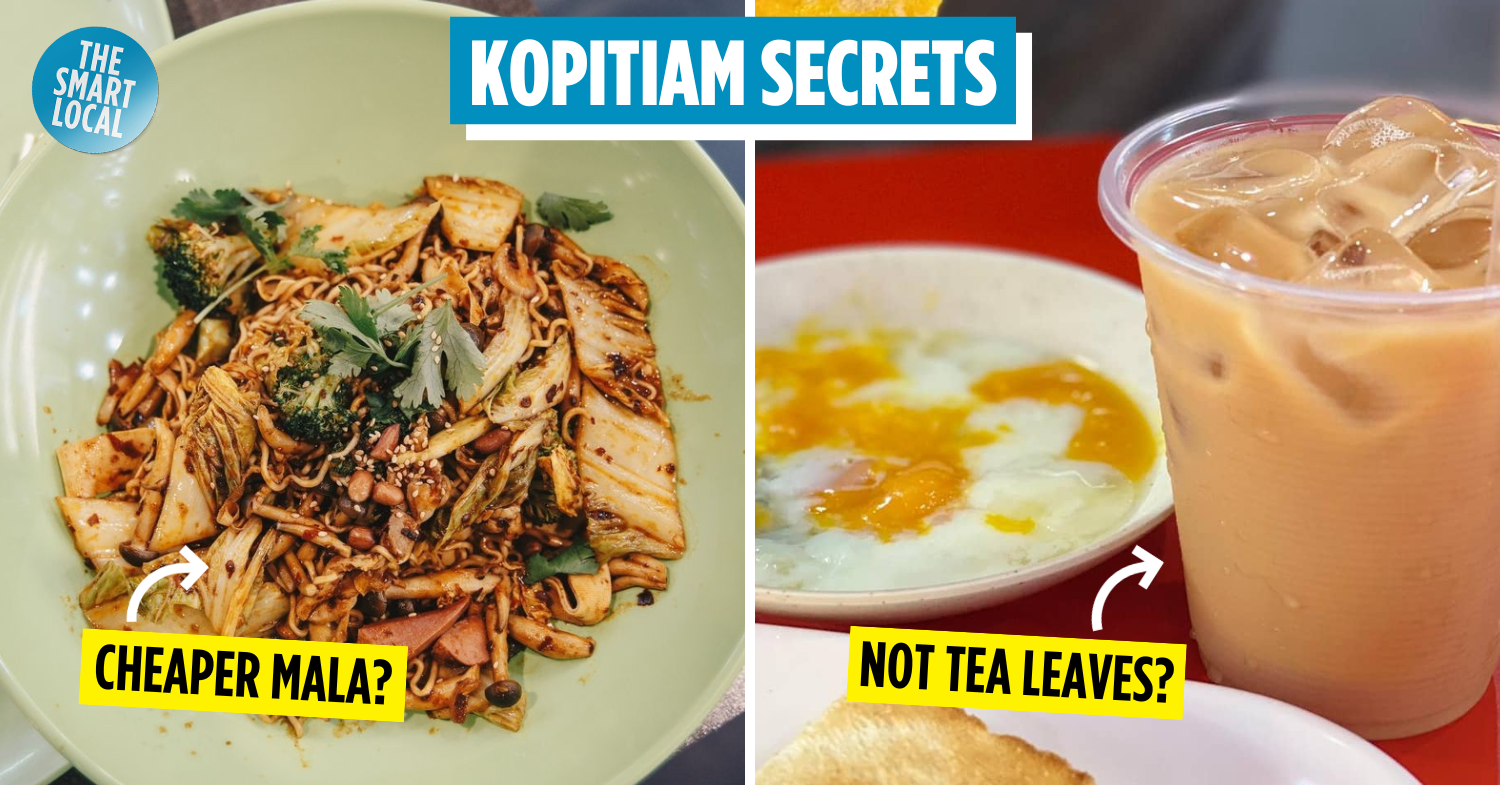Kopitiam & hawker centre secrets
From drinking Milo dinosaurs as kids to our beloved cai fan office lunches as adults, most of us know a thing or two about getting around a hawker centre. After all, kopitiams are a quintessential part of Singaporean culture – it was even made official after being added to the UNESCO list of Intangible Cultural Heritage.
However, to truly get to know the ins and outs of this place, there’s no better way than to go straight to the source of all coffeeshop 411: the aunties and uncles who work there.
If you’re tired of the same old tissue packet chope “hacks” and secret menu drinks, here are kopitiam secrets we’ve gathered from hawker centre aunties and uncles to certify you as a true blue Singaporean.
Table of Contents
- Kopitiam & hawker centre secrets
- What you should know before visiting a kopitiam or hawker centre
- 1. Most drink stalls don’t charge extra for a kopi dabao bag
- 2. Place spoons on top of your cup so no one will clear it
- 3. Teh at kopitiams is made from “tea dust”
- 4. Coffee beans in kopi are pre-fried in butter or margarine
- 5. Get your kopi & teh ‘ban shao’
- 6. Choose broccoli dishes when eating cai fan
- 7. Avoid saucy dishes which might be made from leftovers
- 8. Place the instant noodles at the bottom for cheaper mala
- 9. Top up your soups for free
- What does the word kopitiam mean & what dialect is it?
What you should know before visiting a kopitiam or hawker centre
The first thing you should probably know is the art of ordering a kopi. There are about 12 common terms Singaporeans use to describe the variation of coffee that they want – with or without sugar and milk, how much milk, and even which kind of milk. The glossary can be confusing for first-timers but here’s a guide to ordering kopi like a local.
Now, if you see a tissue packet on one of the tables, it’s not for you to take; it means that someone has already reserved that seat. Nowadays, there are variations to tissue chope-ing with people using their office passes or umbrellas to indicate that the table is taken.
When it comes to kopitiam etiquette, you should return your trays to a tray collection point after your meal. Do take note that most coffee shops have different stations for non-halal and halal food.
As for payment methods, a lot of the neighbourhood kopitiams still accept cash, but if you find yourself without change, you can use PayNow or PayLah! as well. Do note that many traditional open-air kopitiams do not accept credit card payments. However, the more modern ones like Ya Kun Kaya Toast, Nanyang Old Coffee, and Killiney Kopitiam do.
1. Most drink stalls don’t charge extra for a kopi dabao bag
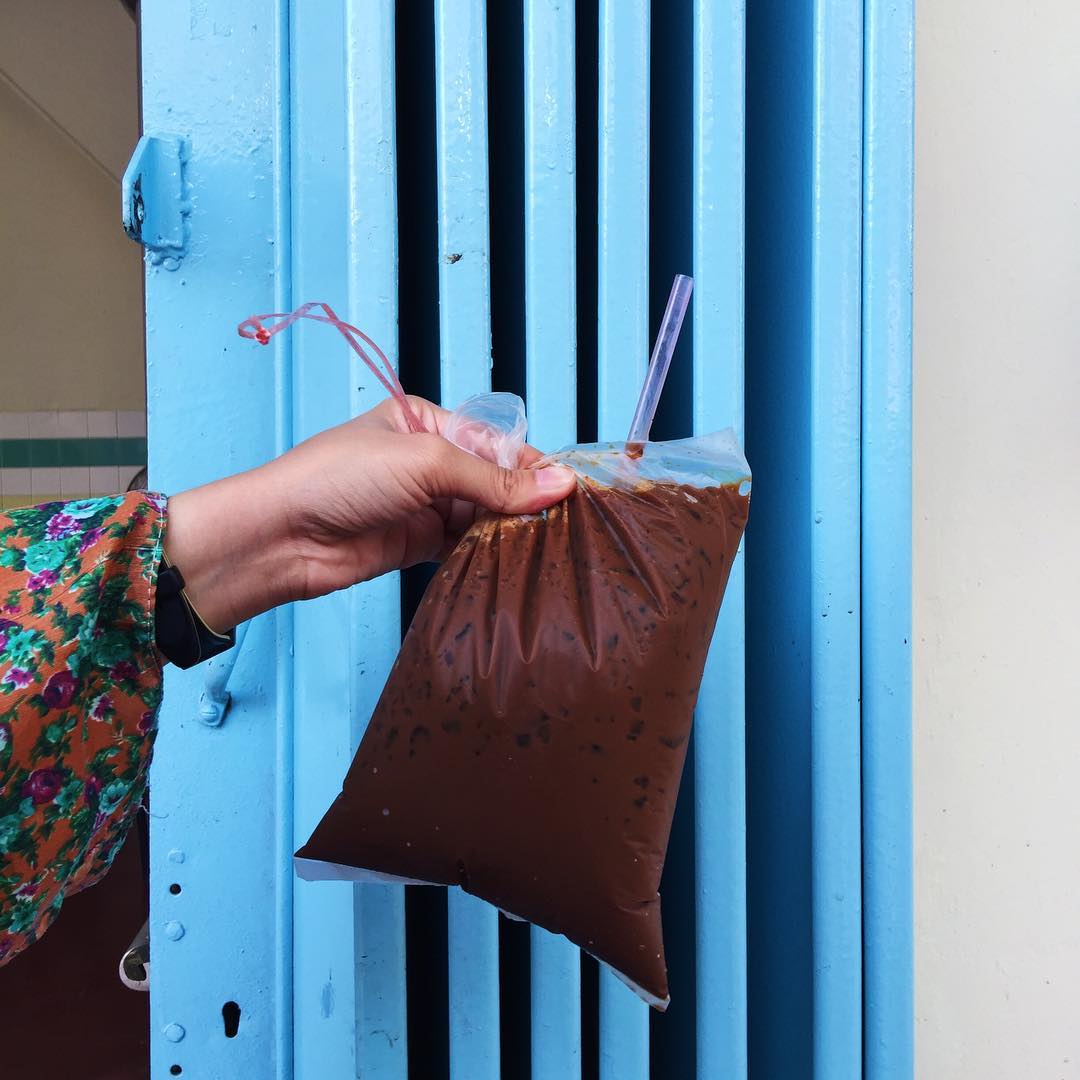
Image credit: @dahliarshd via Instagram
With expenses on the rise, even forking out an extra 20 cents for a takeaway cup feels painful, more so when you do so daily and the amount accumulates. Try this the next time you’re having your kopi peng to-go: ask the auntie or uncle to pour your drink in a dabao plastic string bag instead. Most drink stalls will then waive the extra takeaway container charge.
In fact, this once used to be the more common takeaway packaging, especially for drivers who hung the plastic bag by the string on their car door locks and sipped on-the-go. You can also choose to knot the bag tightly and keep it in your handbag to have later. Even better, bring your own tumblers and collapsable cups.
Fun fact: If you go even further back in time – before plastics came about – people could dabao their drinks in a tin can. There’s a stall in Choa Chu Kang that still offers this traditional experience by serving kopi in a tin can.
2. Place spoons on top of your cup so no one will clear it
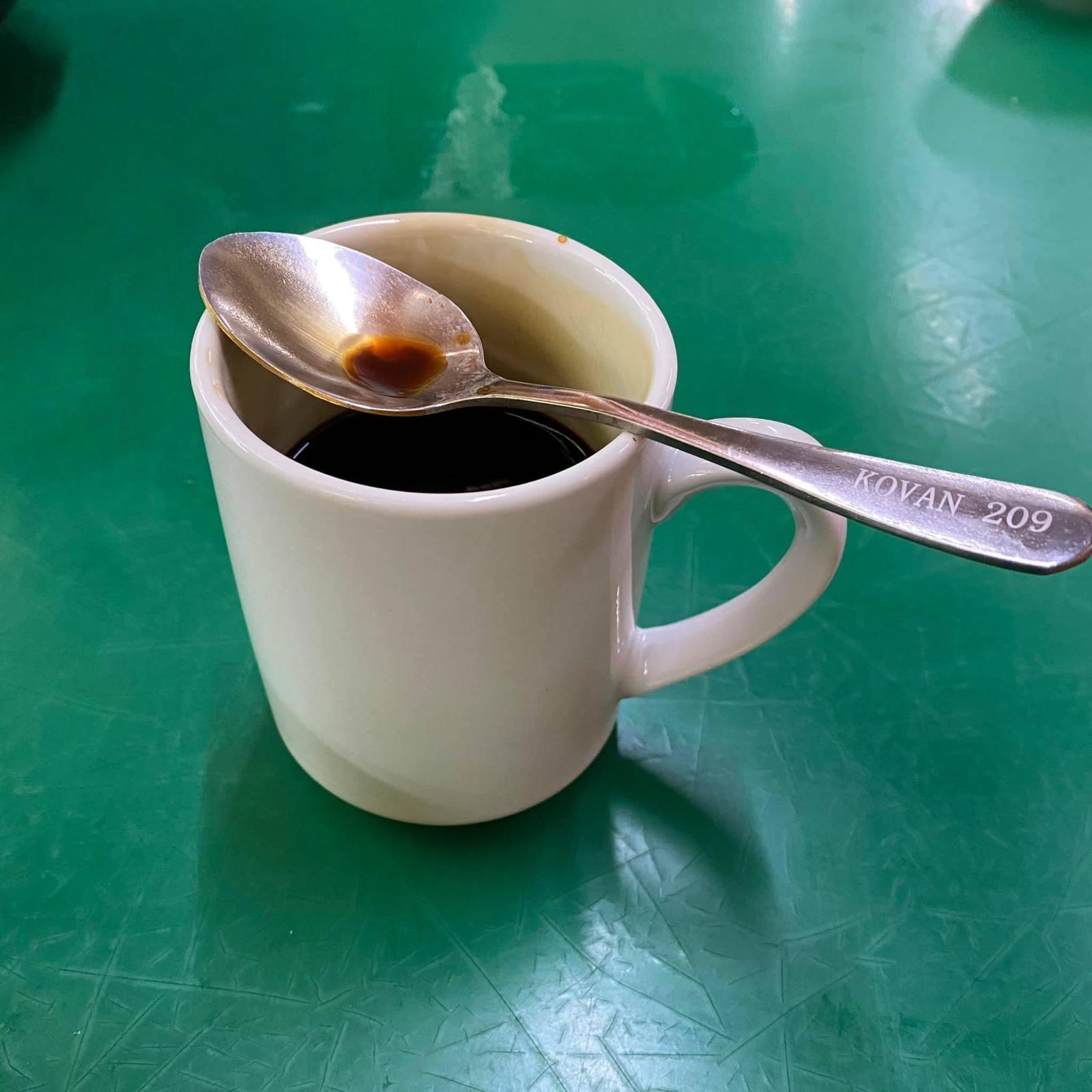 Image credit: Megan Kwek
Image credit: Megan Kwek
Hawker centres are one of the best places to eat alone because it’s self-service and a judgement-free zone where folks dine on their own all the time. And while most dishes don’t take long to prepare, it’s common to get a beverage to sip on while waiting for your meal. But the real dilemma comes when you’re not done with your drink and have to leave the table to collect your food.
If you’re ever caught in a pinch like this, one unspoken rule among hawker centre aunties and uncles is to leave the cup alone when a spoon is placed on top of it. This tells them that you’re still drinking and will be back back to finish it.
However, other patrons may not know this and clear your drink for you to take your seat – so only use this if you actually need to leave and there’s no one around to watch your table for you.
3. Teh at kopitiams is made from “tea dust”
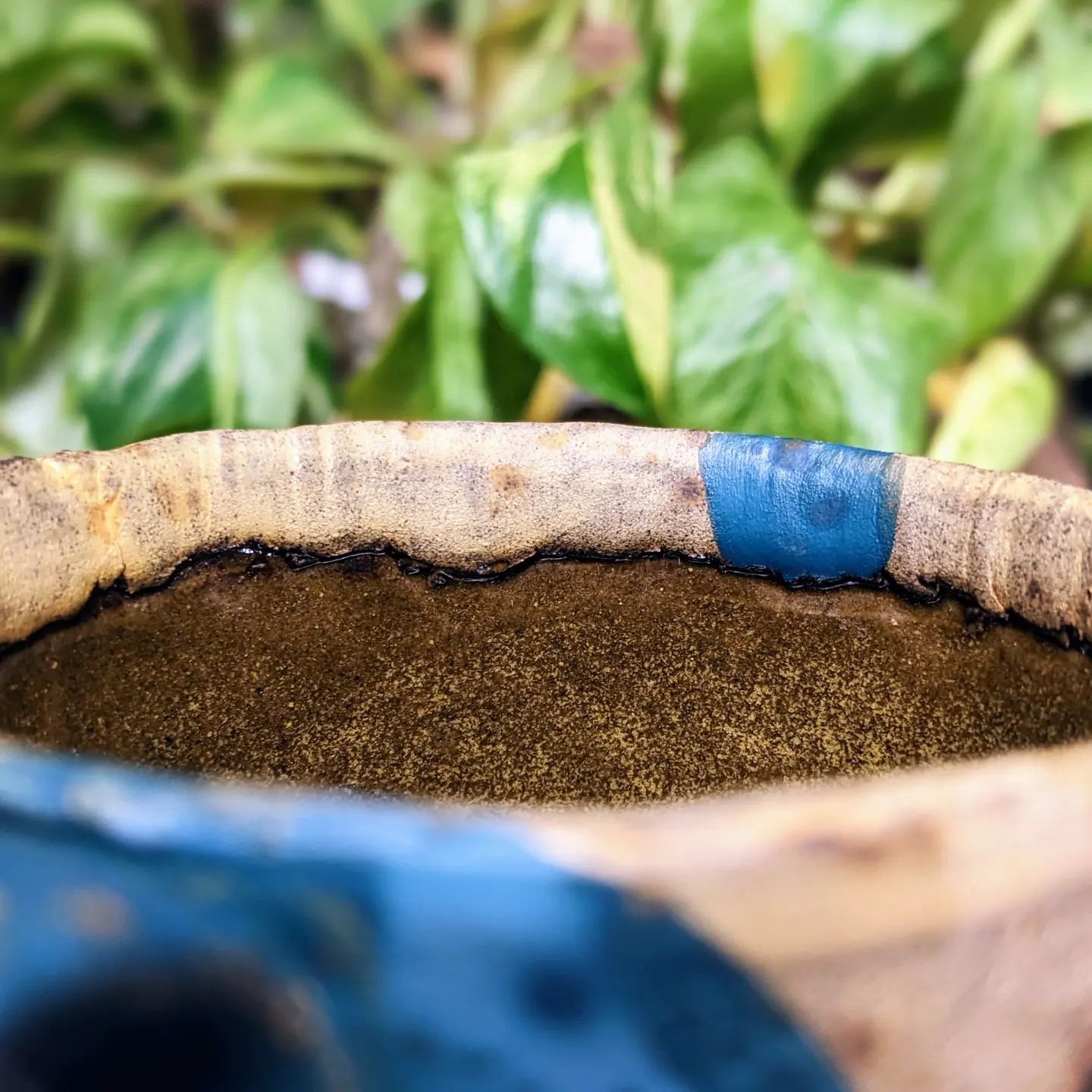
Image credit: @kate.marotz via Instagram
If you’ve ever tried making your own teh at home, chances are, it probably tasted like there was something missing. Most people don’t know this, but the teh that we drink at hawker centres is actually made from something called tea dust, as opposed to the traditional tea leaves found in the supermarket.
Tea dust, or tea powder, is just broken tea leaves. This was typically the cheapest type of tea in the past, making it accessible for hawkers to use. Because of the finer tea particles, using a tea sock was found to be the best way to strain them out, and the teh that we now know and love was thus formed.
4. Coffee beans in kopi are pre-fried in butter or margarine
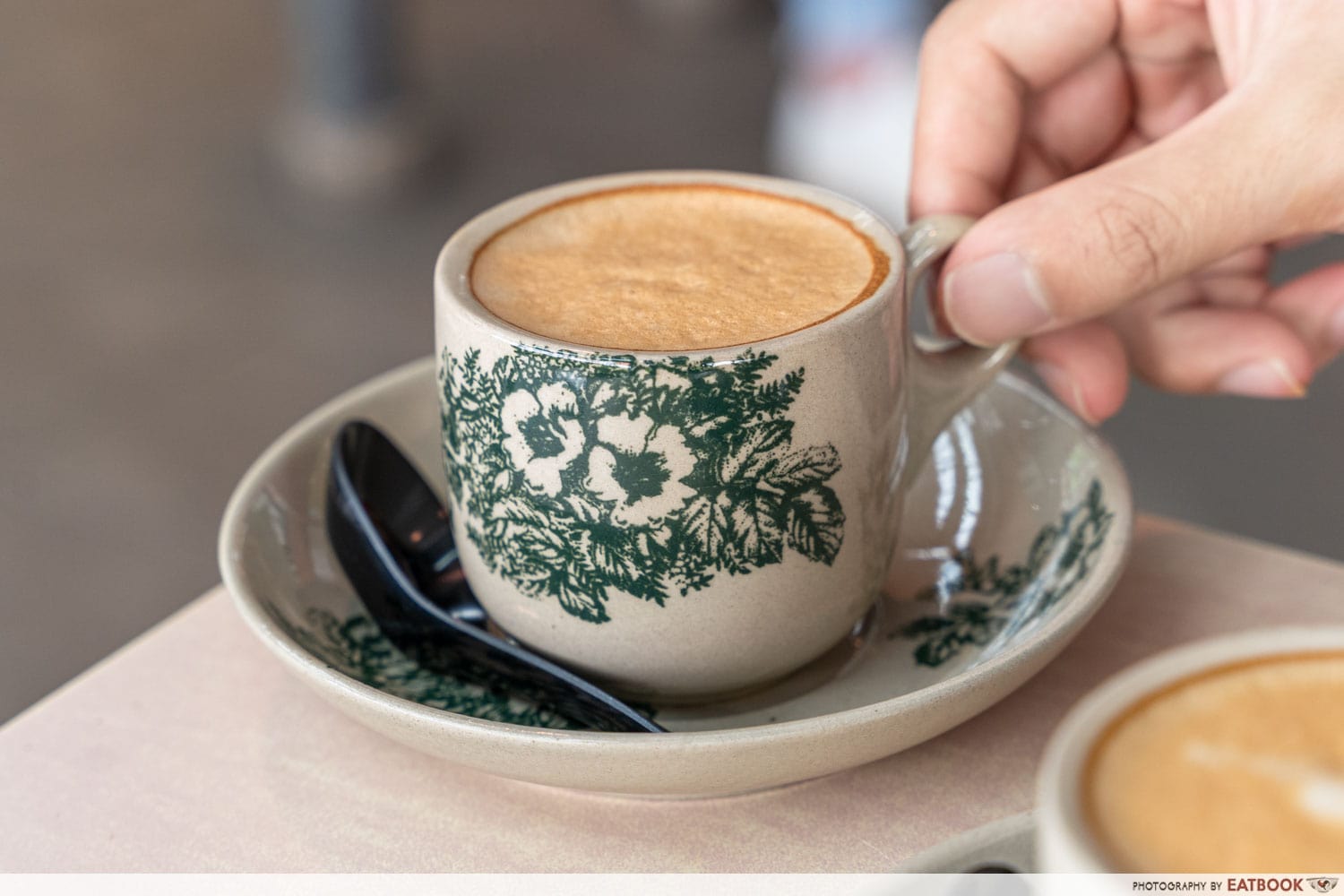 Image credit: Eatbook
Image credit: Eatbook
Most of us rely on our daily morning coffees to function during the day, but experienced coffee drinkers know that a cafe latte just doesn’t hit the same as our local kopis.
Just like tea dust, the coffee beans used for our kopis were cheaper and of a lower quality back in the day. To counter this, hawkers in the past would pre-fry the beans in butter or margarine. This method is still used till today to give the kopi a rich and creamy flavour, and coffee connoisseurs can try their hand at this when making their own cuppas at home.
5. Get your kopi & teh ‘ban shao’
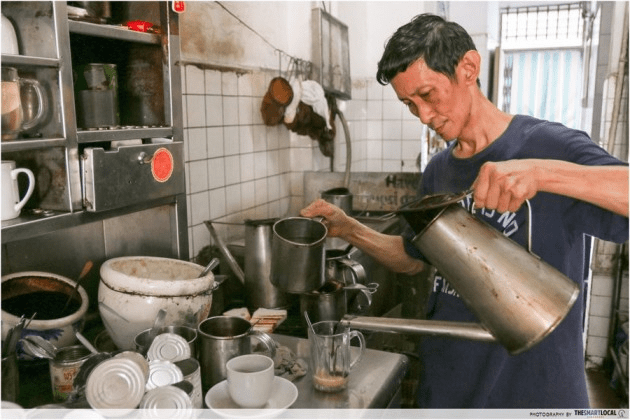
There’s nothing more soothing than a hot drink for breakfast – but when you’re in a rush to get to work, a scalding cup of kopi or teh can be your greatest enemy.
Instead of burning your tongue first thing in the morning, you can simply ask the drink stall vendor to serve your drink “半烧” a.k.a. “ban shao”. Saying this lets them know to add warm water to the thick and concentrated kopi or teh mixture as opposed to the usual boiling water.
6. Choose broccoli dishes when eating cai fan
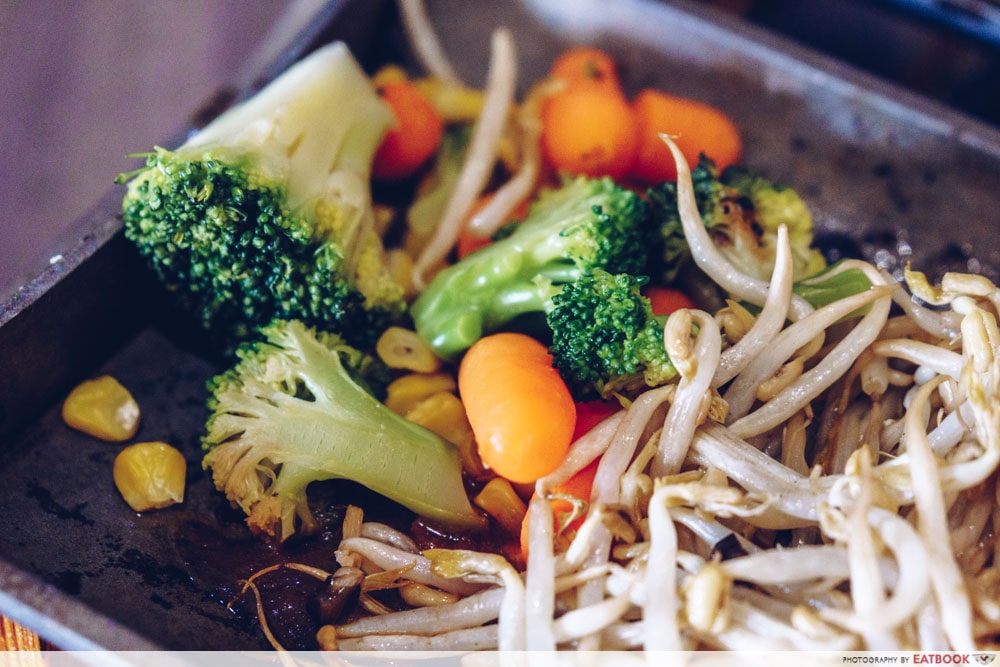
Image credit: Eatbook
Cai fan, or cai png, is a go-to stall at kopitiams with meats and vegetables galore, and choosing what dishes to add to your plate is almost as exciting as eating it.
While kang kong and spinach may look appetising, leafy greens are known to be some of the most difficult vegetables to clean, thus having bugs lurking within the stems if not washed properly. Broccoli, on the other hand, is the easiest vegetable to clean, so you can rest assured that there won’t be any “extra protein” in your meal.
So if you’re trying a new cai fan stall for the first time and aren’t sure where to begin, a safe bet would be to go for the broccoli.
7. Avoid saucy dishes which might be made from leftovers
If you’re particularly concerned about consuming leftovers, you should probably avoid eating saucy dishes at a hawker centre. While this isn’t typically the case, some stalls with pre-prepared dishes resell fried leftovers by coating them with a flavourful sauce like sambal or gravy.
Stalls that have a high turnover rate are less likely to do so, but unless you’re desperately craving a particular dish, the best time to order would be an hour or so after the stall has opened. This way, you’ve got freshly cooked food to choose from after old dishes are cleared out.
8. Place the instant noodles at the bottom for cheaper mala
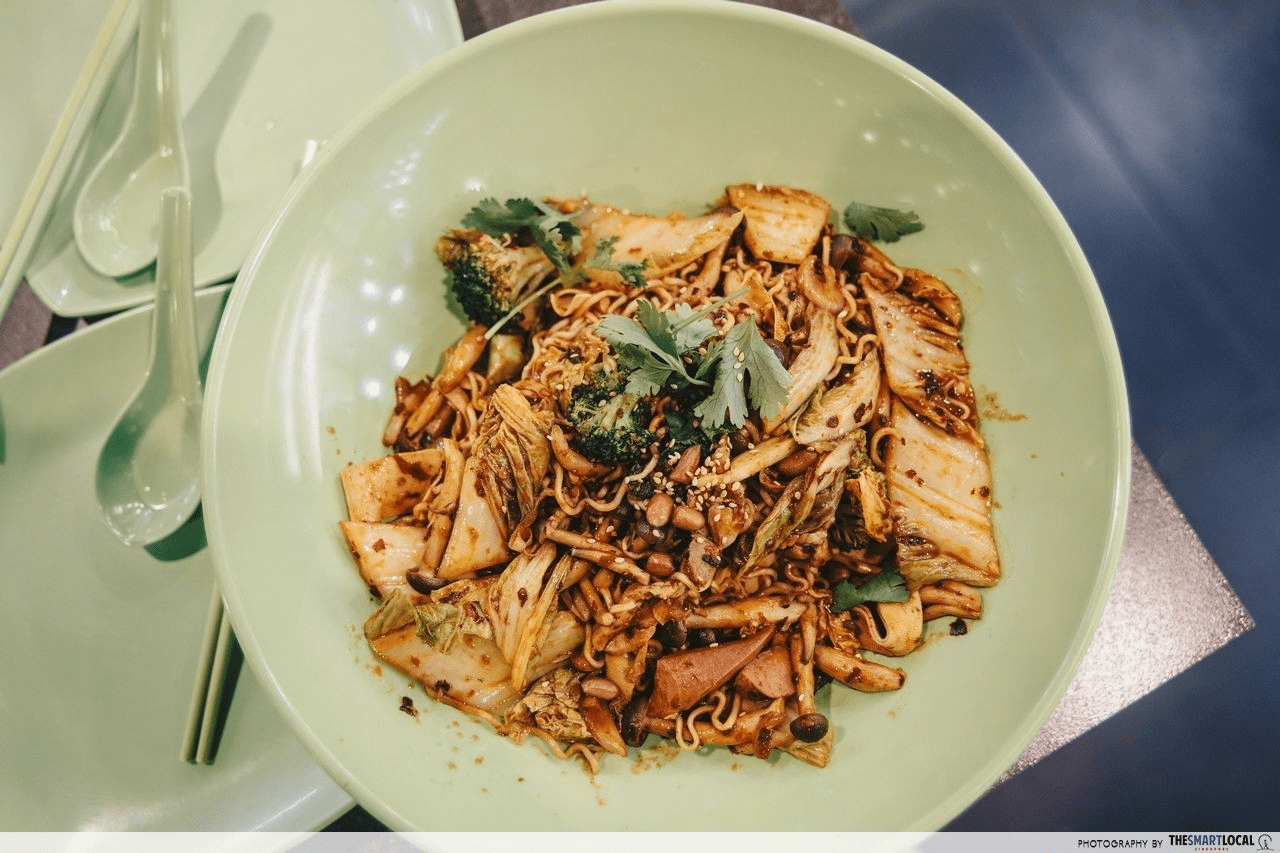
Adding ingredients to your mala bowl is all fun and games until you reach the counter to pay. If you’re a fan of adding instant noodles into the mix, one hack to avoid getting overcharged is to place them at the very bottom of your bowl.
Most of the meats come soaked in juices, and by placing it on top of dry noodles, the water can “drain” out, thus removing all that extra weight. Similarly, dry vegetables should be placed at the very top to avoid absorbing the moisture from the other ingredients. This way, when the meats and vegetables are weighed separately, you don’t have to account for the water weight that might make your mala dish more expensive than it should be.
9. Top up your soups for free
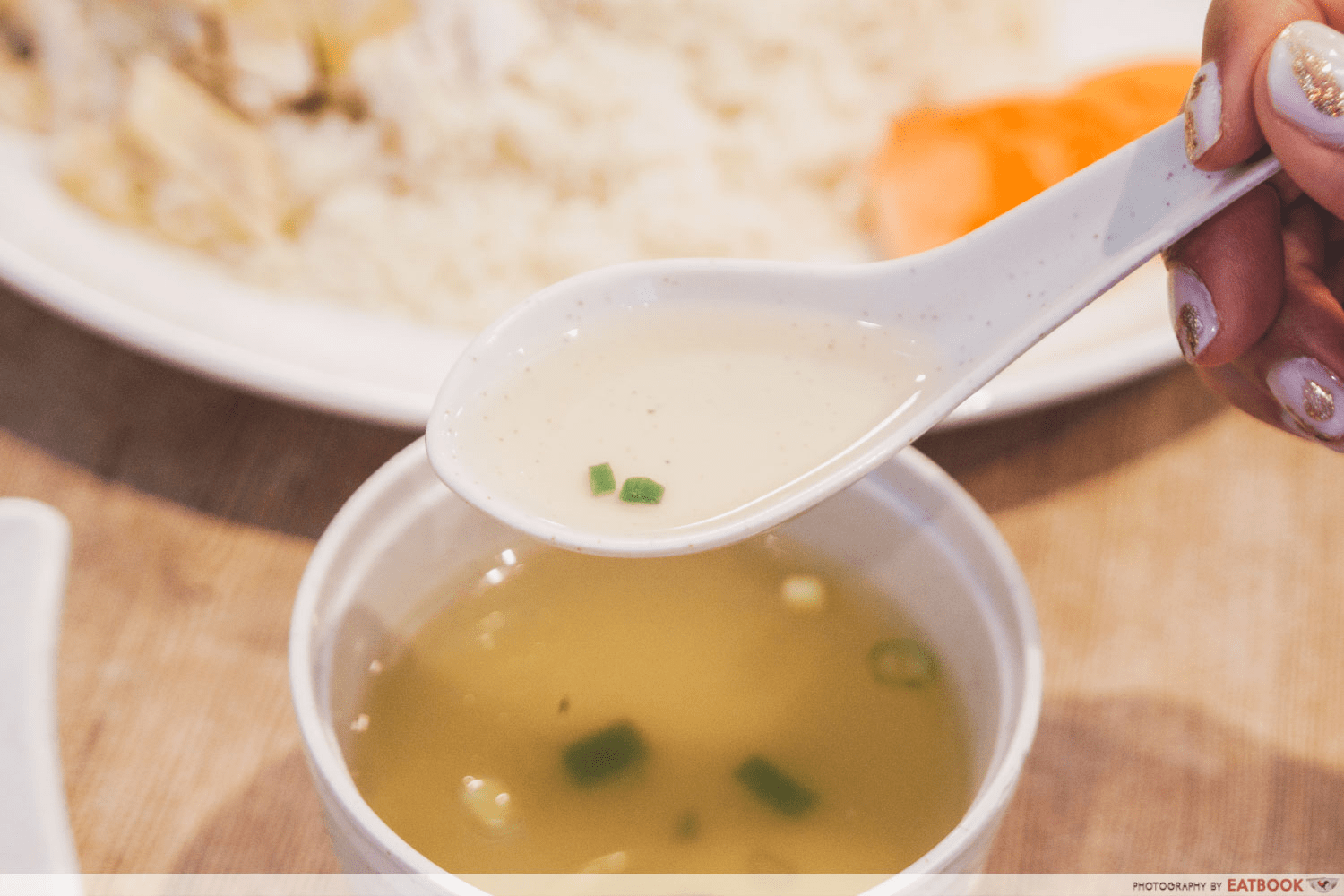 Image credit: Eatbook
Image credit: Eatbook
The best part of any meal, IMO, is the free soup that comes along with it. No matter if it’s chicken rice, fishball noodles, or bak kut teh, the flavourful broth is refreshing and fills me right up.
If you’re still peckish after your meal, most stalls actually give free refills for their soups – all you gotta do is to just ask. Plus, if you don’t feel like spending money on a drink, you can always drink the soup instead.
What does the word kopitiam mean & what dialect is it?
Basically, the term comes from combining “kopi” which means coffee in Malay and “tiam” which refers to a shop in Hokkien. So, kopitiam literally translates to coffee shop.
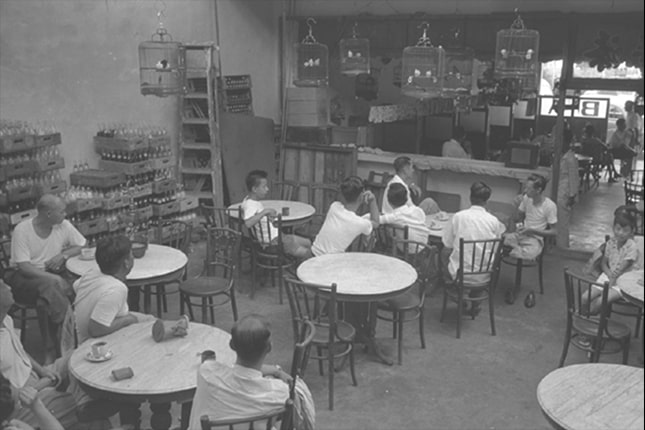
Image credit: National Archives of Singapore via Roots
Delving further into the history of kopitiams, these were set up in the early 20th century by Chinese immigrants who wanted to recreate the atmosphere of a traditional teahouse. These joints served affordable dishes such as half-boiled eggs and toast, mainly catering to the working class.
Today, there are still numerous traditional coffee shops around Singapore where people have social gatherings and even business meetings. Modern kopitiams have also popped up, keeping the essence of the olden days but offering larger menus and air-conditioned spaces. These include Toast Box, Heavenly wang, and Chin Mee Chin Confectionery.
Share these Singapore kopitiam & hawker centre secrets
Many of us have our favourite hawker centres that we like to frequent, but no matter how many times we go, there’s always something new for us to find. Be it a new dish or secret hacks about your go-to stall, may these new discoveries zhng up your next kopitiam experience.
For more Singaporean hacks, check out:
- National Gallery Singapore secrets
- Airlines secrets exposed by an ex-SIA stewardess
- Singapore mysteries solved
- Underground world of Singapore
Cover image adapted from: @abc.hawkers via Instagram
First published on 20th March 2021. Last updated by Aditi Kashyap on 15th March 2024.
